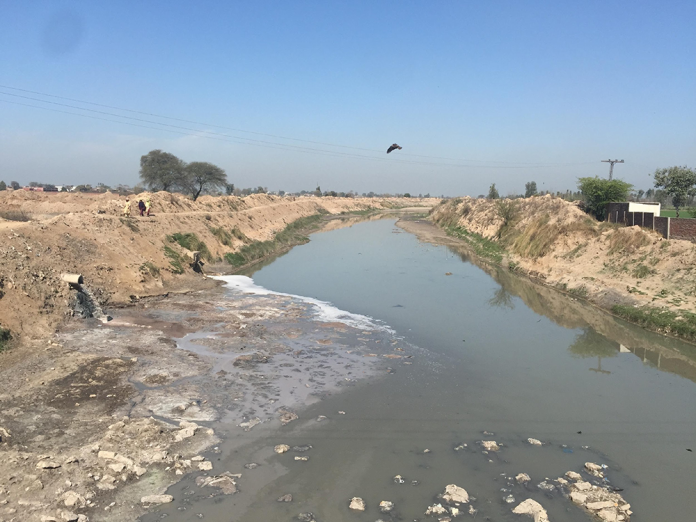Pakistan is one of the most water-stressed in the world, with an average per capita water availability of less than 1,000 m3 per annum,The country is also strongly dependent on water to support its predominantly agriculture-based economy, which accounts for 19% of GDP, 42% of jobs and 91% of the annual freshwater usage.
While Pakistan’s absolute water scarcity is highlighted enough, discussions on the quality of the available water is often neglected. Pakistan treats less than 1% of wastewater in the Indus Basin, extremely far from the SDG goal of being able to treat 50% of the wastewater generated. Despite existing legal provisions, 99% of wastewater is discharged untreated in open drains which eventually enters the Indus River System, and of the 99%, about 75% comes from untreated urban and rural residential wastewater. Pakistan ranks at number 80 among 122 nations regarding drinking water quality. Drinking water sources, both surface and groundwater are contaminated with coliforms, toxic metals and pesticides throughout the country.
In many cities toxic industrial pollution of ground and surface water is detrimental to livelihoods of farmers and sometimes fatal for their livestock. As one farmer from Sheikhupura expressed:
“The dirty water that comes in from the factories goes into Nala Deg. When the Nala overflows, it damages our lands. There is a factory near Khatiala Stop- it makes acid, chemical, soap etc. When the factory lets out the water in the drain, it creates a lot of gasses in the Nala. If our cows and buffaloes go to the Nala in search of water by mistake, they start shaking and trembling and die of the poisonous gasses and liquids.” “It is as if the animal got electrocuted and died!”
– –Lambardaar, Khushhalpura Village
Apart from industrial and municipal sources of water pollution, what often goes unrecognized is agriculture itself as one of contributors to surface and groundwater pollution in Pakistan. Rampant and pervasive use of nitrogen and phosphorus-based fertilisers and pesticides are one of the most harmful sources of water pollution in Pakistan, threatening the ecosystem and biodiversity of the country’s ecosystems. Modern mechanical farming techniques such as the removal of vegetation and intensified ploughing, degrades the soil layer ecosystem and reduces its ability to deliver several ecosystem services that are important to maintain water quality. High levels of nitrogen and phosphorus in water bodies can cause eutrophication of water bodies with severe consequences for aquatic and marine life and biodiversity.
Out of the 388 cities in Pakistan, only eight have wastewater treatment facilities, and some of them are partially functional. It is crucial to establish adequate effluent treatment facilities for industries and municipalities along the Indus. The establishment of strict implementation and monitoring of effluent treatment for industries and municipalities in major towns and cities along the Indus – Lahore, Faisalabad, Gujranwala, Rawalpindi, Sheikhupura, Multan, Sialkot, Karachi, Hyderabad – is critical for protecting the health of Pakistan’s ecosystems and the wellbeing of its population.
Other countries are using innovative low cost nature based solutions such as the use of biomes and plants in constructed mini wetlands for wastewater treatment and re-use. . Constructed wetlands or vegetated buffer strips have been used in countries such as Germany, England, Denmark, United States and Taiwan and have showed demonstrated considerable success at removing ammonia, nitrate, phosphorus and phosphate from agricultural runoff. Pakistan needs to test and scale up the use of sustainable nature-based solutions for effective wastewater treatment.


